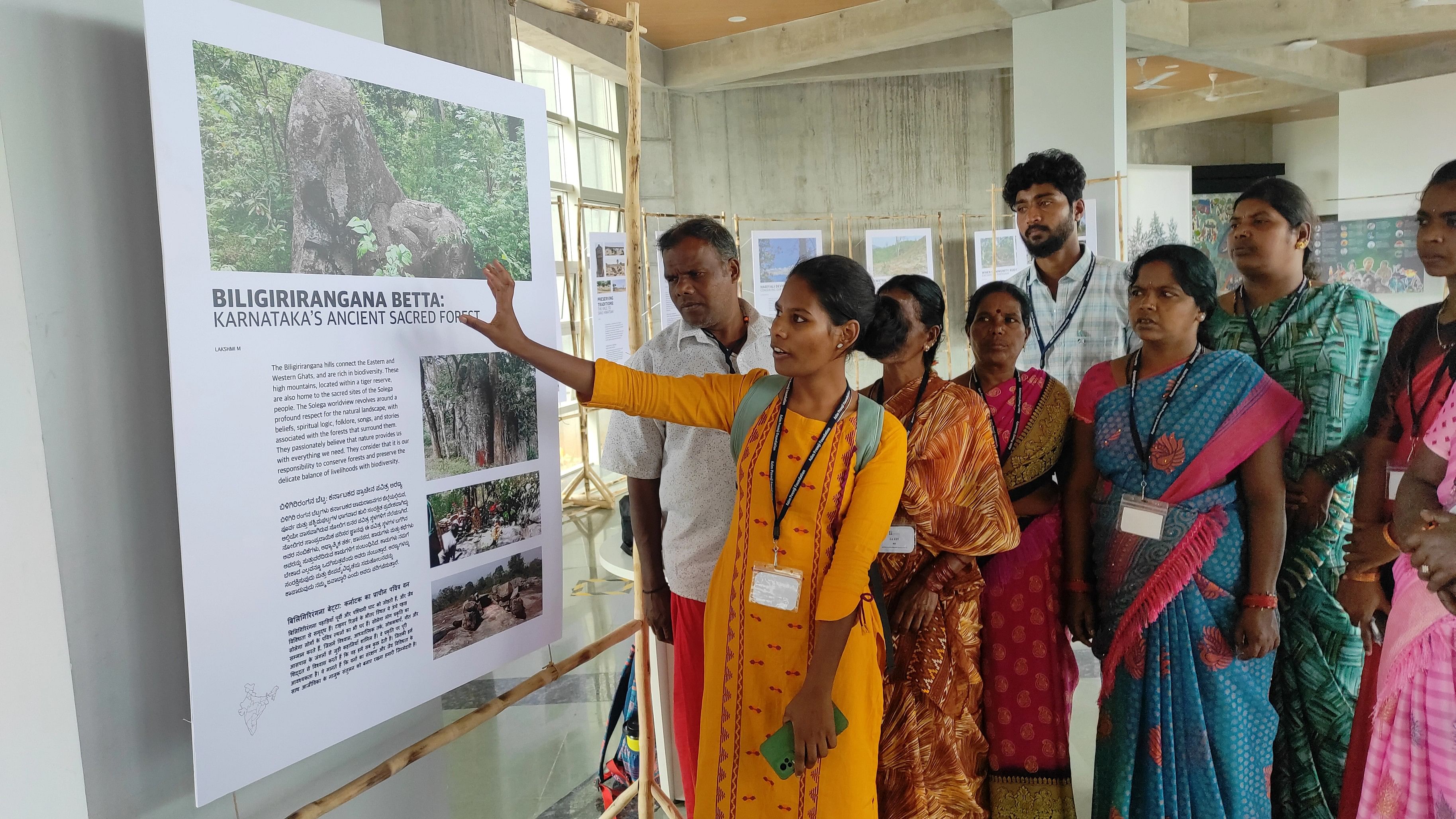
Credit: DH Photo
Bengaluru: What is the cultural role of forests in the life of people? The ‘Forests of Life’ programme, organised by the Azim Premji University (APU), seeks to demonstrate varied answers to the question by bringing together an ensemble of Adivasi perspectives from rural India, artworks and even a vivarium-style container that showcases the intricate web of interactions between plants and the environment.
The trilingual event has works from more than 200 young interns, many of them from tribal communities. The focus is on documenting the symbiotic relationship between people and the forest ecosystem across the country which will be exhibited till November 14.
Lakshmi M from the BRT Tiger Reserve explained the sanctity of the forests for the Soliga community and how it is embedded in their beliefs, folklore, songs and stories.
“My community’s livelihood depends on the sacred science and traditional knowledge which we want to show to the world,” said Laxmi, a postgraduate who works with Punarchit, a Learning and Resource Center in Nagavalli, Chamarajanagar.
Jinu Jishana P, Farsana K K and Rana Nasnim T P document the last few members of the Cholanaikkan, a hunter-gatherer tribe of Nilambur who live in rock shelters and speak a unique language. The community is only 300-member strong and has chosen to live its traditional life rather than integrating with the mainstream society, the researchers said.
‘Living Tapestry’, a vivarium-like container housing native plants, is a model showcasing the complex life of trees beneath the soil and the services provided by the riverine ecosystem. The Gujjars of rural Kashmir come alive in an installation documenting their traditional livelihood which includes crossing international borders to continue their life as nomads.
The positive aspects of India’s rich forests and their biodiversity are juxtaposed with a collection of images and maps exposing the destruction of natural habitats.
The festival will see various events each day across venues at the University. This will include several interactive workshops, panel discussions, movies, folk songs, rendition of folklore and a captivating photo exhibition.
“The event underscores our deep relationship with forests and will shine a light on the urgent need to manage our forests better,” said Harini Nagendra, director of the Research Centre and Centre for Climate Change at APU.
School students from across Karnataka and nearby towns of Tamil Nadu and Kerala will visit the school with the APU organising transport facilities for government schools and disadvantaged children.
Harini said that about 15,000 students are expected to visit the varsity in the next 12 days.